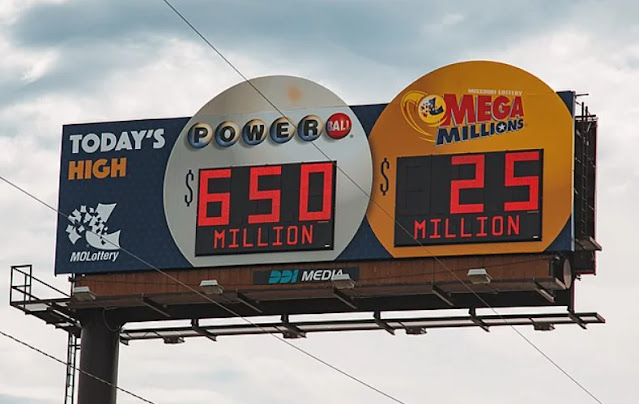Zachary Taylor Facts - 12th President of USA
This article will explain Twelfth President of United States of America Zachary Taylor Facts. Most agree that Zachary Taylor was not President long enough to have a huge impact on the Presidency or on the United States. He is not remembered as a great President.
He also gained his fame through his leadership of U.S. troops at the Mexican-American War. Taylor was a Southern slaveholder, yet he was against the spread of slavery into the territories. He was not interested in politics; however, he was recruited as the Presidential nominee in the 1848 election by the Whig Party.
Zachary Taylor was able to defeat the Democratic nominee, Lewis Cass, and then he became the very first President of the United States to have not held a prior elected office. Additionally, Taylor was the last United States President to come from the South until Woodrow Wilson was elected.
During his Presidency, Zachary Taylor pushed for the settlers of California and New Mexico to go past the territorial stage and go ahead and draft constitutions for statehood, which would set the stage for the future Compromise of 1850.
Zachary Taylor was only President for sixteen months when he died of gastroenteritis. Rumors stated that he was poisoned with arsenic, but those claims have not been proven. After his death, Millard Fillmore took over as President.
During his childhood, Taylor lived in a small wood cabin in the frontier of Louisville, Kentucky. Because of his family's improved prosperity, they moved to a brick house. This house was shared with seven of his brothers and sisters.
By 1800, his father was the owner of 10,000 acres, town lots located in Louisville, and a total of twenty-six slaves. There weren't schools on the Kentucky frontier, so Taylor had just a basic education from tutors that his father would hire at times. He was considered a poor student, and his spelling, grammar, and handwriting were considered to be crude.
While the War of 1812 was ongoing, Taylor defended Fort Harrison in Indiana Territory Zachary Taylor Painting from the Shawnee Chief Tecumseh and his Indian followers. Then Taylor was promoted to major temporarily and led his 7th Infantry to a campaign that led to Spur's Defeat.
Zachary Taylor was also the commander of Fort Johnson until it was abandoned. When the war ended in 1814, his rank was reduced back to the captain, and he resigned, yet he reentered the army when he was commissioned as a major just a year later.
In 1819, Zachary Taylor had the rank of lieutenant colonel, and then he was made a full colonel in 1832. Taylor led his 1st Infantry Regiment in the 1932 Black Hawk War, where he was personally able to accept the surrender of Black Hawk.
In 1837, he had to defeat the Seminole Indians, and then he was promoted to the rank of brigadier general and was given command of all the American troops in Florida. In 1841, he was the commander of the southern division of the United States Army.
In 1845, Texas had become a state of the United States, and so President James K. Polk sent Taylor in order to go into the disputed territory of the border of Texas and Mexico in order to defend the state of Texas from Mexican attempts to take it back. He was given command of the troops on the Rio Grande. Some of Taylor's men were attacked by Mexican forces close to the river, so Polk told Congress that a war between the two nations was started by Mexico.
During the same month, Taylor commanded forces at the Battle of Palo Alto, in which the American's superior weapons and artillery were used to defeat the larger Mexican opposition. In September, Taylor and his Army were able to inflict great casualties against the Mexicans at the Battle of the Monterrey.
Next, half of Taylor's army was ordered to join the soldiers of Winfield Scott as they besieged Veracruz. The Mexican General Antonio Lopez de Santa Anna learned that Taylor had just 6,000 men, so he determined to beat him. At the Battle of Buena Vista, Santa Anna's 20,000 men attacked Taylor's 6,000 men in February of 1847, where there were 672 American casualties and 1,800 casualties for the Mexican Army. This sent Santa Anna away from the field of battle and made Zachary Taylor into a hero who was compared to both Andrew Jackson and George Washington.
He did not think that expanding slavery into the western parts of the United States was practical because he believed that President Zachary Taylor neither sugar nor cotton could be produced there as a plantation economy. Taylor was a nationalist and believed that secession was not an appropriate way to resolve problems in the national government.
He then aligned himself with the policy of the Whig Party. He believed that the President should not veto a law unless that law went against the Constitution, no office should interfere with Congress, and the Cabinet should be powerful.
Following his victory at Buena Vista, political clubs were forming which supported Zachary Taylor for President, but no one was completely sure of his beliefs. He declared, however, that he was fundamentally a Whig in principle, but he also considered himself a Jeffersonian-Democrat.
Taylor was given the Whig nomination in 1848 for President. His Vice Presidential nominee was Millard Filmore of New York. Because he was a war hero, this helped him. He was able to defeat the Democratic candidate, Lewis Cass, and the Free Soil candidate, Martin Van Buren.
Once Taylor became President, slavery as an issue was dominating debates. Taylor advised the settlers in New Mexico and California to create state constitutions and then apply for statehood in December for when Congress met.
He predicted that these Constitutions would be against slavery in New Mexico and California. In December and January of 1850, Zachary Taylor told Congress that it should allow those areas to become states once their Constitutions arrived. He also stated that there should be efforts made to develop territorial governments for California and New Mexico.
Zachary Taylor and John M. Clayton, his Secretary of State, did not have much experience in foreign affairs prior to Taylor becoming President. Taylor did not become involved in the development of American foreign policies or in diplomacy.
His administration did attempt to put an end to a filibustering expedition against the country of Cuba, they argued with Portugal and France over disputes of reparation, and they supported the German liberals while the revolutions of 1848 were ongoing. His administration also confronted the country of Spain, which had arrested a few Americans on piracy charges.
He also helped the United Kingdom search for British explorers who had become lost in the Arctic. He wanted to plan a canal across Nicaragua; however, the British opposed this, stating that they had a special status in Honduras.
Negotiations were conducted with Taylor and the British in which the Clayton-Bulwer Treaty was reached, which stated that neither the British nor the United President Taylor States would claim control of the canal that was built in Nicaragua. The treaty was a very important step in an Anglo-American alliance and weakened Manifest Destiny.
The issue of slavery continued to dominate Taylor's term in office. He owned slaves on his plantation located in Louisiana. But he himself took what has been described as a moderate stance on expansion of slavery into territories, which angered and frustrated fellow Southerners.
He told then that he would do all that was necessary to enforce the laws, including him leading the Army if necessary, and would hang rebels. Henry Clay was able to propose a complex Compromise of 1850, but Taylor died while it was still being debated.
He also sampled a few dishes by citizens who wished him well. He died suddenly five days later on July 9, and the cause of death was listed as gastroenteritis. He was then interred into the Public Vault of the Congressional Cemetery located in Washington, D.C. Then later he was placed in a mausoleum in Louisville, Kentucky, where it is called the Zachary Taylor National Cemetery.
In the late 1980s, it was proposed that Zachary Taylor was murdered by way of poison, and his closest living relative was convinced and the Coroner of Jefferson County, Kentucky ordered an exhumation.
His remains were exhumed in 1991 and the Chief Medical Examiner of Kentucky conducted Zachary Taylor Coin radiological studies of samples of fingernail, hair, and other tissues. Then the remains were returned to the cemetery. The arsenic levels were several hundred times lower than they would have been if he had indeed been poisoned.
Despite these findings, the assassination theories have not been altogether put to rest. Instead, it may just be that he came down with cholera morbus from the large amounts of cherries and iced milk that may have been affected by the unhealthy climate in Washington with its flies and large sewers.
Taylor was opposed to the marriage. Sarah died only three months after the marriage. Another one of his daughters, Margaret Anne, died at age 33 from liver failure. In 1841, Zachary Taylor established his home in Baton Rouge, Louisiana, and he had a large plantation and many slaves.
BIRTH - November 24, 1784, in Orange County, Virginia
MOTHER - Sarah Davney Strother
FATHER - Richard Taylor
SISTERS - Elizabeth Lee, Sarah Vailey, and Emily Richard
BROTHERS - Hancock, William Dabney Strother, and Joseph Pannill
MARRIAGE - Margaret Mackall Smith June 21, 1810 in Jefferson Cunty Ky.
CHILDREN - Ann Mackall, Sarah Knox, Octavia, Margaret, Mary, Elizabeth, and Richard
HIGHER EDUCATION - None
RELIGION - Episcopalian
PRE-PRESIDENCY PROFESSION - Soldier
MILITARY SERVICE
POLITICAL PARTY - Whig
INAUGURATION
VICE PRESIDENT - Millard Fillmore
FIRST LADY - Margaret Taylor (1849-1850)
SUPREME COURT APPOINTMENTS - None
John M. Clayton (1849-1850)
SECRETARY OF THE TREASURY
William M. Meredith (1849-1850)
SECRETARY OF WAR
George M. Crawford (1849-1850)
ATTORNEY GENERAL
Reverdy Johnson (1849-1850)
POSTMASTER GENERAL
Jacob Collamer (1849-1850)
SECRETARY OF THE NAVY
William B. Preston (1849-1850)
SECRETARY OF THE INTERIOR
Thomas Ewing, first to serve in this new cabinet post (1849-1850)
BURIAL PLACE
Jefferson County, Kentucky.
LANDMARKS
Taylor National Cemetery, Louisville, Kentucky.
Zachary Taylor Biography
He was born on November 24, 1784, and died on July 9, 1850. He was both a military leader and the 12th President of the United States of America. In the United States Army, he had a forty-year career. He served in the War of 1812, the Black Hawk War, and the Second Seminole War.He also gained his fame through his leadership of U.S. troops at the Mexican-American War. Taylor was a Southern slaveholder, yet he was against the spread of slavery into the territories. He was not interested in politics; however, he was recruited as the Presidential nominee in the 1848 election by the Whig Party.
Zachary Taylor was able to defeat the Democratic nominee, Lewis Cass, and then he became the very first President of the United States to have not held a prior elected office. Additionally, Taylor was the last United States President to come from the South until Woodrow Wilson was elected.
During his Presidency, Zachary Taylor pushed for the settlers of California and New Mexico to go past the territorial stage and go ahead and draft constitutions for statehood, which would set the stage for the future Compromise of 1850.
Zachary Taylor was only President for sixteen months when he died of gastroenteritis. Rumors stated that he was poisoned with arsenic, but those claims have not been proven. After his death, Millard Fillmore took over as President.
Zachary Taylor Early Life
Zachary Taylor was born in Orange County, Virginia to a prominent family of planters. His date of birth was November 24, 1784. His parents had nine children, and he was the youngest out of their three sons.During his childhood, Taylor lived in a small wood cabin in the frontier of Louisville, Kentucky. Because of his family's improved prosperity, they moved to a brick house. This house was shared with seven of his brothers and sisters.
By 1800, his father was the owner of 10,000 acres, town lots located in Louisville, and a total of twenty-six slaves. There weren't schools on the Kentucky frontier, so Taylor had just a basic education from tutors that his father would hire at times. He was considered a poor student, and his spelling, grammar, and handwriting were considered to be crude.
Zachary Taylor Military Career
On May 3, 1808, Zachary Taylor joined the United States Army and he received a commission as the first lieutenant of the Seventh Infantry Regiment. He was sent west into Indiana Territory where he had the ranking of captain. He was given command of Fort Knox and stayed there until 1814.While the War of 1812 was ongoing, Taylor defended Fort Harrison in Indiana Territory Zachary Taylor Painting from the Shawnee Chief Tecumseh and his Indian followers. Then Taylor was promoted to major temporarily and led his 7th Infantry to a campaign that led to Spur's Defeat.
Zachary Taylor was also the commander of Fort Johnson until it was abandoned. When the war ended in 1814, his rank was reduced back to the captain, and he resigned, yet he reentered the army when he was commissioned as a major just a year later.
In 1819, Zachary Taylor had the rank of lieutenant colonel, and then he was made a full colonel in 1832. Taylor led his 1st Infantry Regiment in the 1932 Black Hawk War, where he was personally able to accept the surrender of Black Hawk.
In 1837, he had to defeat the Seminole Indians, and then he was promoted to the rank of brigadier general and was given command of all the American troops in Florida. In 1841, he was the commander of the southern division of the United States Army.
In 1845, Texas had become a state of the United States, and so President James K. Polk sent Taylor in order to go into the disputed territory of the border of Texas and Mexico in order to defend the state of Texas from Mexican attempts to take it back. He was given command of the troops on the Rio Grande. Some of Taylor's men were attacked by Mexican forces close to the river, so Polk told Congress that a war between the two nations was started by Mexico.
During the same month, Taylor commanded forces at the Battle of Palo Alto, in which the American's superior weapons and artillery were used to defeat the larger Mexican opposition. In September, Taylor and his Army were able to inflict great casualties against the Mexicans at the Battle of the Monterrey.
Next, half of Taylor's army was ordered to join the soldiers of Winfield Scott as they besieged Veracruz. The Mexican General Antonio Lopez de Santa Anna learned that Taylor had just 6,000 men, so he determined to beat him. At the Battle of Buena Vista, Santa Anna's 20,000 men attacked Taylor's 6,000 men in February of 1847, where there were 672 American casualties and 1,800 casualties for the Mexican Army. This sent Santa Anna away from the field of battle and made Zachary Taylor into a hero who was compared to both Andrew Jackson and George Washington.
Presidential Election of Zachary Taylor
Reportedly Taylor had never shared his political beliefs prior to 1848, nor had he voted before this time. He considered himself to be an independent, believed in a strong banking system of the United States, and believed that Andrew Jackson should not have let the Second Bank of the United States collapse back in 1836.He did not think that expanding slavery into the western parts of the United States was practical because he believed that President Zachary Taylor neither sugar nor cotton could be produced there as a plantation economy. Taylor was a nationalist and believed that secession was not an appropriate way to resolve problems in the national government.
He then aligned himself with the policy of the Whig Party. He believed that the President should not veto a law unless that law went against the Constitution, no office should interfere with Congress, and the Cabinet should be powerful.
Following his victory at Buena Vista, political clubs were forming which supported Zachary Taylor for President, but no one was completely sure of his beliefs. He declared, however, that he was fundamentally a Whig in principle, but he also considered himself a Jeffersonian-Democrat.
Taylor was given the Whig nomination in 1848 for President. His Vice Presidential nominee was Millard Filmore of New York. Because he was a war hero, this helped him. He was able to defeat the Democratic candidate, Lewis Cass, and the Free Soil candidate, Martin Van Buren.
Presidency of Zachary Taylor
Even though Zachary Taylor was a Whig in principle, he was not planning on being a puppet of the Whig party. During his administration, he organized the United States Department of the Interior, but the legislation supporting it was approved on former President Polk's final day in office. Zachary Talyor appointed the former Treasury Secretary, Thomas Ewing as the Secretary of the Interior.Once Taylor became President, slavery as an issue was dominating debates. Taylor advised the settlers in New Mexico and California to create state constitutions and then apply for statehood in December for when Congress met.
He predicted that these Constitutions would be against slavery in New Mexico and California. In December and January of 1850, Zachary Taylor told Congress that it should allow those areas to become states once their Constitutions arrived. He also stated that there should be efforts made to develop territorial governments for California and New Mexico.
Zachary Taylor and John M. Clayton, his Secretary of State, did not have much experience in foreign affairs prior to Taylor becoming President. Taylor did not become involved in the development of American foreign policies or in diplomacy.
His administration did attempt to put an end to a filibustering expedition against the country of Cuba, they argued with Portugal and France over disputes of reparation, and they supported the German liberals while the revolutions of 1848 were ongoing. His administration also confronted the country of Spain, which had arrested a few Americans on piracy charges.
He also helped the United Kingdom search for British explorers who had become lost in the Arctic. He wanted to plan a canal across Nicaragua; however, the British opposed this, stating that they had a special status in Honduras.
Negotiations were conducted with Taylor and the British in which the Clayton-Bulwer Treaty was reached, which stated that neither the British nor the United President Taylor States would claim control of the canal that was built in Nicaragua. The treaty was a very important step in an Anglo-American alliance and weakened Manifest Destiny.
The issue of slavery continued to dominate Taylor's term in office. He owned slaves on his plantation located in Louisiana. But he himself took what has been described as a moderate stance on expansion of slavery into territories, which angered and frustrated fellow Southerners.
He told then that he would do all that was necessary to enforce the laws, including him leading the Army if necessary, and would hang rebels. Henry Clay was able to propose a complex Compromise of 1850, but Taylor died while it was still being debated.
Zachary Taylor's Death
The real cause of the premature death of Zachary Taylor has not been able to be established. On the fourth of July in 1850, Zachary Taylor ate a snack of milk and cherries at a celebration of Independence Day.He also sampled a few dishes by citizens who wished him well. He died suddenly five days later on July 9, and the cause of death was listed as gastroenteritis. He was then interred into the Public Vault of the Congressional Cemetery located in Washington, D.C. Then later he was placed in a mausoleum in Louisville, Kentucky, where it is called the Zachary Taylor National Cemetery.
In the late 1980s, it was proposed that Zachary Taylor was murdered by way of poison, and his closest living relative was convinced and the Coroner of Jefferson County, Kentucky ordered an exhumation.
His remains were exhumed in 1991 and the Chief Medical Examiner of Kentucky conducted Zachary Taylor Coin radiological studies of samples of fingernail, hair, and other tissues. Then the remains were returned to the cemetery. The arsenic levels were several hundred times lower than they would have been if he had indeed been poisoned.
Despite these findings, the assassination theories have not been altogether put to rest. Instead, it may just be that he came down with cholera morbus from the large amounts of cherries and iced milk that may have been affected by the unhealthy climate in Washington with its flies and large sewers.
Personal Life of Zachary Taylor
Zachary Taylor Facts - In 1810, Taylor married Margaret Smith. They had six children. Their son, Richard, later became a lieutenant general in the Confederate Army. One of his daughters, Sarah Knox Taylor, married Jefferson Davis, future President of the Confederate States of America.Taylor was opposed to the marriage. Sarah died only three months after the marriage. Another one of his daughters, Margaret Anne, died at age 33 from liver failure. In 1841, Zachary Taylor established his home in Baton Rouge, Louisiana, and he had a large plantation and many slaves.
Legacy of Zachary Taylor
Most historians think that he was too nonpolitical. He is only one of four presidents who were not able to nominate a judge to serve on the United States Supreme Court. He has been inducted into the Louisiana Political Museum and Hall of Fame in Winnfield as of 1995, and he is the only United States President to have lived in Louisiana.More Zachary Taylor Facts
NICKNAME - Old Rough-and-ReadyBIRTH - November 24, 1784, in Orange County, Virginia
MOTHER - Sarah Davney Strother
FATHER - Richard Taylor
SISTERS - Elizabeth Lee, Sarah Vailey, and Emily Richard
BROTHERS - Hancock, William Dabney Strother, and Joseph Pannill
MARRIAGE - Margaret Mackall Smith June 21, 1810 in Jefferson Cunty Ky.
CHILDREN - Ann Mackall, Sarah Knox, Octavia, Margaret, Mary, Elizabeth, and Richard
HIGHER EDUCATION - None
RELIGION - Episcopalian
PRE-PRESIDENCY PROFESSION - Soldier
MILITARY SERVICE
- Volunteer in Kentucky militia
- Career Military Officer (1808-1848)
- Retired a Major General
POLITICAL LIFE
U.S. President One Term (March 5, 1849-July 9, 1850) Died in officePOLITICAL PARTY - Whig
INAUGURATION
- March 5, 1849, at the Capitol, At the age of 64
- Zachary Taylor - Inaugural Address
Zachary Taylor Administration
PRESIDENCY - Less than one term (March 5, 1849-July 9, 1850), He died in office after being diagnosed by the doctors as having cholera morbus.VICE PRESIDENT - Millard Fillmore
FIRST LADY - Margaret Taylor (1849-1850)
SUPREME COURT APPOINTMENTS - None
Zachary Taylor Cabinet
SECRETARY OF STATEJohn M. Clayton (1849-1850)
SECRETARY OF THE TREASURY
William M. Meredith (1849-1850)
SECRETARY OF WAR
George M. Crawford (1849-1850)
ATTORNEY GENERAL
Reverdy Johnson (1849-1850)
POSTMASTER GENERAL
Jacob Collamer (1849-1850)
SECRETARY OF THE NAVY
William B. Preston (1849-1850)
SECRETARY OF THE INTERIOR
Thomas Ewing, first to serve in this new cabinet post (1849-1850)
DEATH
July 9, 1850, in the White House at the age of 65. He was the second American President to die in office and the second President to die in the White HouseBURIAL PLACE
Jefferson County, Kentucky.
LANDMARKS
Taylor National Cemetery, Louisville, Kentucky.









